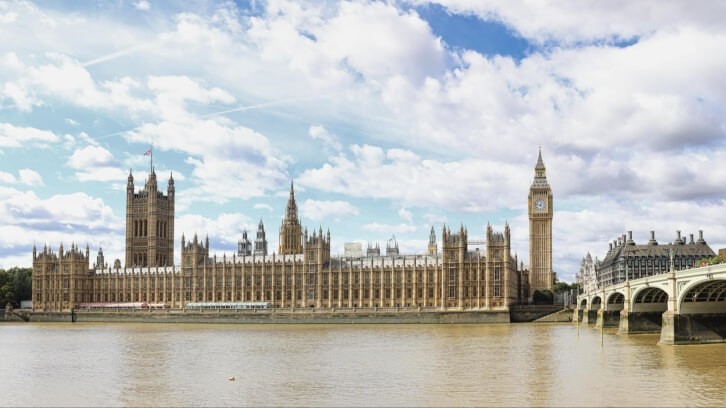LICENSING HUB - LEGAL WITH POPPLESTON ALLEN
Martyn’s Law – Where are we now?

I am going to turn things the other way around and firstly tell you where we are not, rather than where we are. There is no legislation presently making its way through parliament. There is a proposed draft bill, called the Terrorism (Protection of Premises) Bill, which was published on 2 May 2023 and, while broadly supported by stakeholders as articulating the general principle that public venues should take certain measures regarding the risk of terrorist acts, was criticised, not least by the Home Affairs Select Committee, for its potentially disproportionate effect on smaller and voluntarily run venues, for example, village halls. The draft bill also lacked (and as far as I am aware still lacks) a great amount of detail, as this will be set out in regulations (secondary legislation).
So, we don’t have a law or even a pending law yet. We have a consultation issued by the Government, which concluded on 18 March 2024 and related specifically to the Standard Tier.
Premises which have a public capacity of between 100 and 799 fall within the Standard Tier. Premises with a capacity above that, subject to certain exceptions, are in the so-called Enhanced Tier. Premises with a public capacity of below 100 fall outside the scope of Martyn’s Law.
Pubs, bars, restaurants, nightclubs and other similar venues fall within scope due to the activities that take place on the premises, but only if their public capacity is 100 or more. How that capacity is to be calculated will be set out in (yet to be published) regulations. There are of course different ways to calculate your capacity, although it appears the Government may be proposing that the capacity identified by any fire risk assessment would suffice.
Also, what about beer gardens and patios, car parks and such like? Whether these areas, which may not formally form part of the licensed premises but are nevertheless used in conjunction with the premises for licensable activities are to be included in terms of the calculation of capacity is unknown, although it looks likely that they will.
The consultation on the Standard Tier makes it clear the original proposals in Martyn’s Law, which was for annual basic terrorism training for all front of house workers and a Standard Terrorism Evaluation to be completed for each premises, are no longer proposed. Significant feedback had been received prior to the consultation that these would be disproportionate, so the consultation now proposes that a premises has in place “procedural measures to reduce the risk of physical harm to individuals at the premises in the event of an attack either occurring or being suspected as about to occur… It is not expected or required that any physical alterations be undertaken, or additional equipment purchased for Standard Tier premises.”
Procedure message
To put it in more basic terms still, the message on procedures for the Standard Tier will be expected to include:
- Evacuation – how to get people out of the building,
- Invacuation – how to bring people into the premises to keep them safe, or move them to safe parts of the building,
- Lockdown – how to secure the premises against attackers, e.g. locking doors, closing shutters and using barriers to prevent access, and
- Communication – how to alert staff and customers and move people away from danger.
We know sector-specific guidance is being drafted in consultation with relevant stakeholders.
As I said, the so-called annual “terrorism training” is also no longer required for Standard Tier premises, but the procedural measures identified above should include those working at the premises being sufficiently instructed or trained to carry out those measures in the event of an attack happening or about to happen. That sounds to me – as a lawyer rather than a security expert, admittedly – as rather like training.
Most licensed premises are likely to fall within the Standard Tier, so what applies in this Tier clearly matters. Unfortunately, there is still very little detail.
We eagerly await the outcome of the consultation and the Government’s formal response.
The Enhanced Tier (800 capacity and above) has additional and more onerous requirements but many venues with this sort of public capacity will already have similar procedures in place.
There will be a Regulator to educate, inspect and enforce, with the emphasis on education. The Regulator will have powers to issue penalties, notices for compliance and indeed to close premises and events. The ethos is however on collaboration. Some of the fines are eye-watering. For a standard premises the maximum fixed amount is £10,000, plus a potential daily penalty in addition of £500 a day, limited to the maximum fixed amount (so £20,000 in total), one per contravention.
Potential penalties
For Enhanced Tier premises the maximum fixed amount is £18m or 5% of the qualifying worldwide revenue, whichever is the greater, plus a potential daily penalty of 1% of the fixed penalty, which you won’t need a calculator to tell you is £180,000 per day if you are looking at the £18m maximum fixed penalty.
Enough to get any chief exec to wake up and take notice.
The draft bill also contains provisions for layout plans for premises which are considered by an appropriate security advisor to pose a heightened security risk if made public (for example on a council’s online register). A ‘Terrorism Protection Statement’ will require a council not to make those plans available online or otherwise, except to authorities and for the purpose of legal proceedings. This regime also exists in planning law and would essentially mitigate against hostile reconnaissance, for example, by those with evil intent checking online the location of CCTV blind spots or emergency exits.
Regarding timescales there is still a lot to do and clearly this parliament (and this Government) is running out of time. Firstly, the Government must consider and respond to the Standard Tier consultation (including consulting all those Government departments affected by the bill). One assumes the bill will be redrafted to some degree and then laid before parliament. It then has to go through three separate readings, a report and a committee stage in each house where it will be debated and possibly amended. Lastly, if all goes well it will receive Royal Assent. If that is before a general election is called then all well and good but if parliament is dissolved for a general election then the bill will die.
We know parliament can move quickly when needed, although whether this proposed legislation will be considered serious and non-contentious enough to qualify is not my area of expertise. One would certainly hope so.
Lastly, even if and when the bill receives Royal Assent and becomes an Act of Parliament, the Home Office has already made clear it expects there to be an 18 month to two-year implementation period when the provisions will not have effect, to allow premises to prepare.
By then, we may well be nearing 2027, which will make it nearly a decade since Martyn Hett and the 21 other innocent victims of the Manchester Arena terrorist bombing were killed.
- Andy Grimsey is a solicitor at licensing solicitors Poppleston Allen







